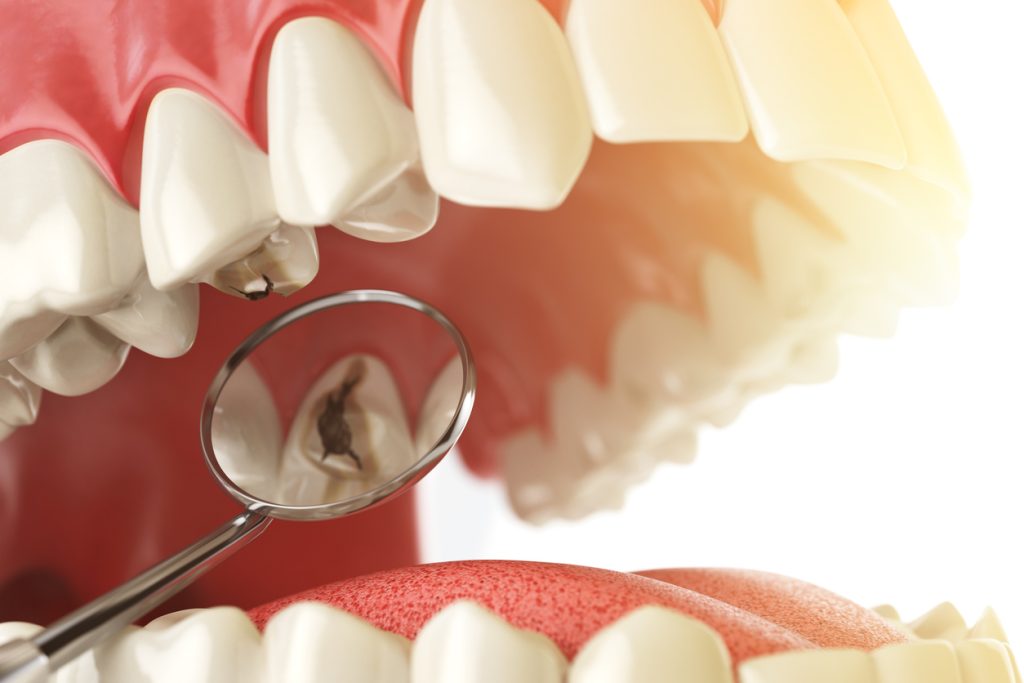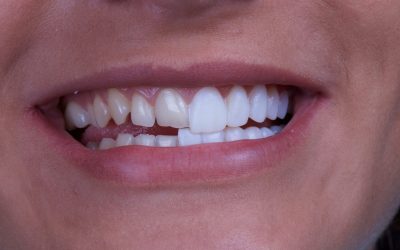Tooth decay, especially in childhood, can cause serious dental problems if left untreated. Let’s start by answering the question what is a Tooth Decay first. Tooth decay begins as bacteria in the mouth of the tooth. These bacteria combine with food, and if the cleaning stage is not achieved, tooth enamel will be damaged with a high probability. This, in turn, accelerates the formation of caries. Teeth are bones that are located in the oral cavity and help digestion. In order to maintain dental and gum health, regular oral care is required to prevent tooth decay and gum disease. In cases where oral care is insufficient, bacterial plaques form in the mouth and on the surfaces of the teeth. This creates an acidic environment in the teeth, causing tooth enamel wear and damage to the dentin layer. Because of this damage, cavities called cavities are formed in the dentin, and they are also called tooth decay.
What are the Symptoms of Dental Caries?
In order to understand its symptoms, you must first know the answer to the question of what is a Tooth Decay. There are different stages of tooth decay and each presents different symptoms and risks. When caries first appears, very few symptoms are observed. As their size progresses and the bruise grows, it causes sensitivity to hot and cold foods, as well as sugar. Sometimes tooth decay causes constant pain. If left untreated, the tooth becomes infected, as the decay reaches the nerves. Infection in the tooth can cause an abscess, which can cause severe pain, swelling of the face, and fever.
What Causes Tooth Decay?
There are three main factors for the formation of tooth decay: a sensitive tooth surface, food residues that are favorable for microorganisms, the presence of microorganisms that will lead to their breakdown and acid formation. The most common causes of tooth decay in foods are carbohydrates, that is, roughly, sugary foods. Dental caries is the softening of your tooth enamel and refers to the damage to the tooth structure of acids formed as a result of plaque bacteria breaking down the sugar in your mouth. If this mineral loss in the enamel is not treated, a cavity or hole may eventually form in the tooth. If left untreated, these holes can grow over time and even destroy the entire tooth. If your gum retractions and roots are exposed, plaque acids can attack the dentin and cause the condition known as root cavity. As a result, the nerves in your teeth are exposed, and you may feel pain when eating or drinking.
What are the Types of Tooth Decay?
Tooth Decay is divided into some classes among its own. These categories are the factors that determine the level of tooth decay:
- E1 type tooth decay : newly developed caries
- E2 type tooth decay : tooth decay that reaches from the tooth enamel to the tooth bone
- D1 type tooth decay : tooth decay in the tooth bone
- D2 type tooth decay : dental caries that has reached the lower part of the tooth, but has not yet
- D3 type tooth decay : tooth decay that passes into hard areas of the tooth and reaches its pulp
How is caries treated?

Among the treatments for caries, many different methods and techniques can be used. Before proceeding to any treatment, you should undergo an examination with a dentist and fully transfer all your symptoms to him. After describing all the symptoms such as tenderness, pain, or pain one by one, your dentist will determine exactly how the caries is located, determine the severity and size of the caries, and begin to create a treatment plan accordingly. Although it is possible to detect dental caries only with an oral examination, the need for a dental X-ray can be felt when detecting the point of contact of some caries.
What are the methods of preventing tooth decay?
There are many methods of preventing tooth decay. Different methods can be applied in children and adults. But the most well-known methods are regular brushing of teeth and flossing. In general, tooth decay is a preventable condition. Non-neglect of oral and dental hygiene can be considered a prerequisite for preventing caries.
Why does the tooth filling fall out?
The filling cannot hold the substances directly to the tooth. In order to ensure Dec and tightness between the tooth and the filler, some substances are used. These substances allow the filler to last longer and the patient will not have any problems. However, not all fillings can be used for long periods of time as desired. It can break, break off or completely fall off due to various negative reasons.
What causes pain after filling?
It is a treatment aimed at saving the diseased from rotting. In the dental filling, the decaying part of the tooth is removed and the filling material is placed heredity is considered normal that the tooth that has been filled hurts, becomes sensitive, and aches in the first few weeks after the tooth filling. There may be pain due to reasons such as not having the filling done successfully, not being able to clean the tooth completely, not holding the Filling, or opening the Filling.
What should be considered after tooth filling?
If your tooth has been numbed before the tooth filling is done, you should not eat for 3-4 hours. If you feel dizzy or very sluggish after filling, you can eat by being careful not to bite your lip and cheek in the area that is numb. You should still eat liquid foods for a while. There may be pain after filling. For this, you can use a painkiller prescribed by your doctor after the filling or used earlier at home.
Along with the answer to the question what is a Tooth Decay, we also answered many curious questions about tooth filling. However, if there is a question you want to ask, you can call us immediately. Our expert dentists are waiting for your call to answer your questions.





